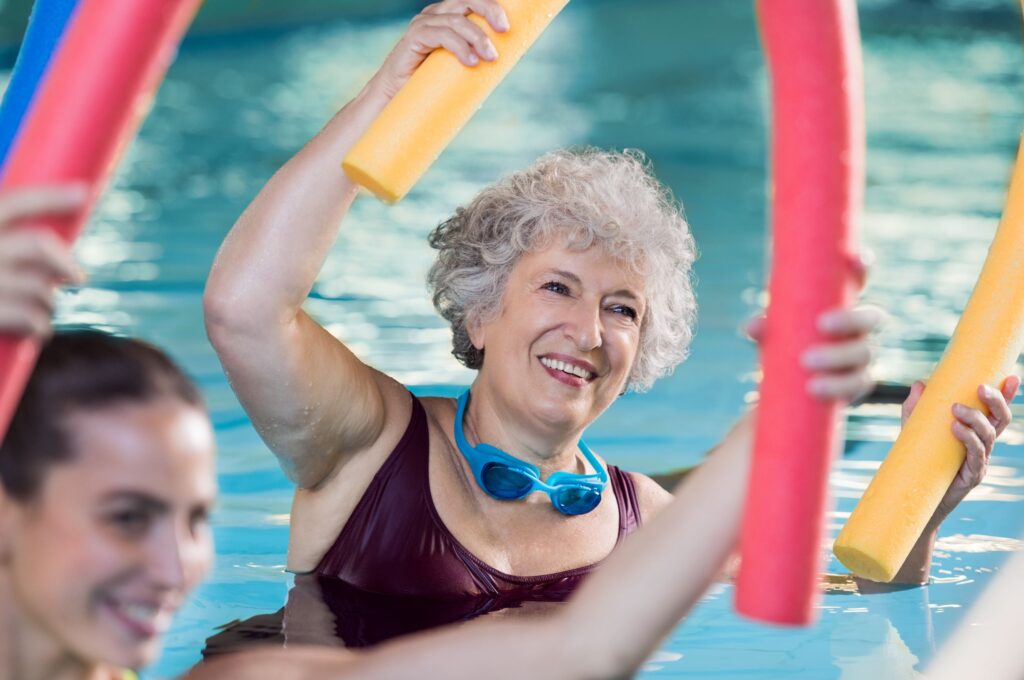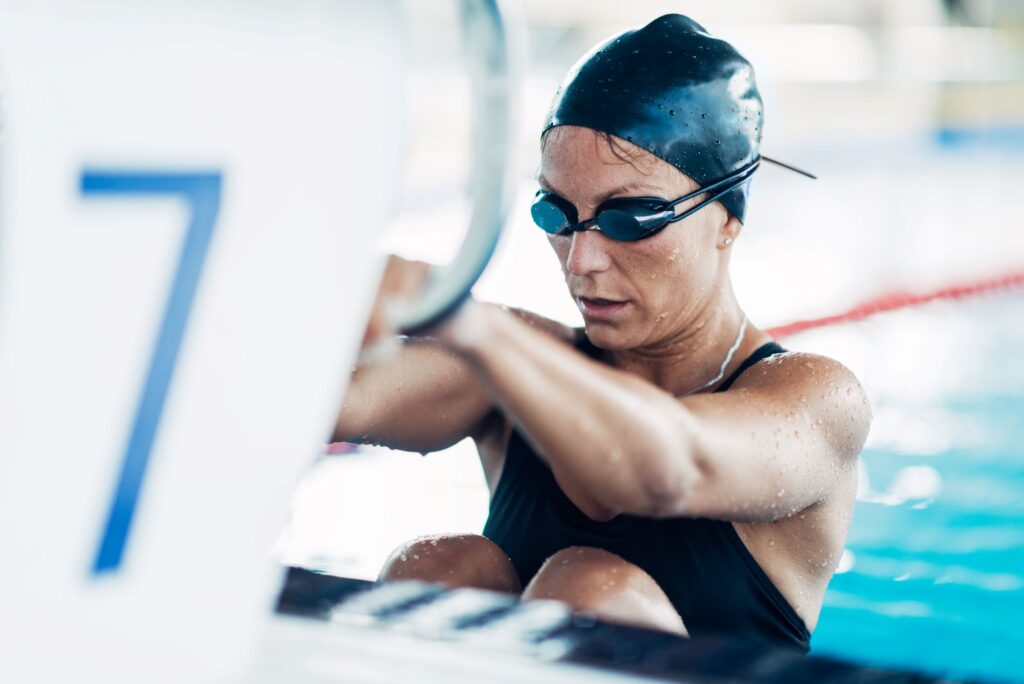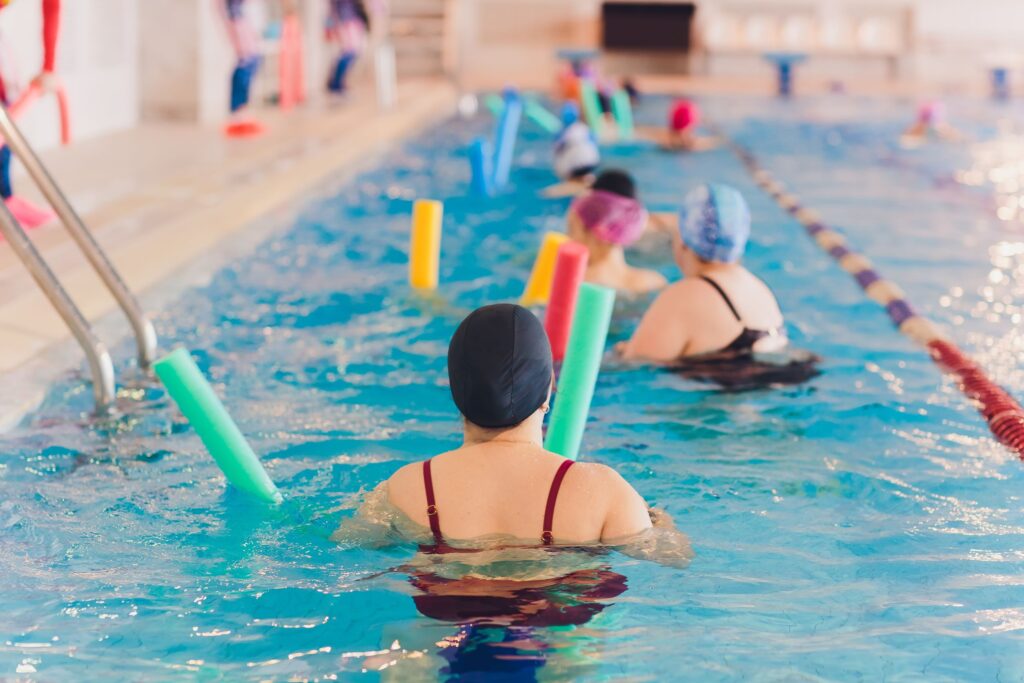Swimming For Fitness: Top 12 Benefits for Women
With hectic work and family schedules, women need more ways to unwind and relax. Swimming is a low-impact aerobic activity that builds long, lean muscles and helps women maintain a healthy weight.
According to experts, swimming may also help you cope with life’s stresses by increasing feelings of self-worth and accomplishment, taking your mind off worries and offering a means for more social interaction. Swimming can likewise combat the development of, and decrease symptoms related to, depression.
It is a lifelong activity particularly beneficial to ageing bodies due to the unloaded benefits of buoyancy, the muscular resistance of the water, and cardio fitness. A complete full-body exercise indeed!
Swimming benefits everyone
No matter what your fitness level, the general benefits of swimming are yours to go out and grab and make your own.
It has the power to give your muscles a makeover, transform you into a cardio queen, turn back the clock, and calm you quicker than a secluded beach in the Bahamas.
But if this isn’t enough to get you reaching for your cossie, here are our top benefits of swimming to show you there is no such thing as being too cool for the pool.
#1 Engages your entire body
One of the biggest benefits of swimming is that it truly works your entire body, head to toe. Swiming targets both lower- and upper-body muscles. Along with your arms, legs, and core muscles activated to propel you through the water, swimming also engages your back muscles. Your body’s centre of gravity shifts from side to side in a similar way to that of a boxer during a fight.
#2 Calorie burning
One of the major benefits of swimming is that it helps with bodyweight management goals. Swimming laps can be a great way to get the calorie burning that you need during the day whether you swim for fun or to workout. You will burn more calories by swimming than walking because you will be using more muscle groups and using your body in different ways than walking does. You will also get your muscles moving in new ways if you aren’t currently involved in any other sports because it is often easier to submerge yourself into swimming on a regular basis rather than trying to get involved in any other activity that may not feel like something you would want to do every day.
Swimming isn’t just great for your heart it works out your entire body including legs, arms, and abs which are important muscle groups to focus on when working out and trying to shed those unwanted pounds; so if swimming workout is something that sounds like it would be enjoyable then it may be the perfect activity for you!
#3 Improves posture
How many celebrities have been caught with slumped shoulders? Many, many stars look better in their photos than they do in person, thanks partly to the way their posture has naturally changed through years of being photographed. Fitting in more pool time can help reverse this trend by improving posture and strengthening back muscles. Regular swimming lessons also tones abs—making them look firmer and more toned—and helps flatten the tummy while making the waist look smaller by toning the hips and upper thighs.
#4 Asthmatics should consider this option
People who have asthma or lung disease, or those with heart or motion sickness issues may find swimming an ideal exercise choice. Make sure you speak with your doctor before starting a swimming program to ensure it is safe for you and that the areas of the pool you use have not been treated for chemicals.
#5 Decreases joint pain
Water provides natural resistance against joint stress without causing joint lubrication. The cumulative effect of water resistance over time has been shown to decrease joint pain and stiffness in people with rheumatoid arthritis, osteoarthritis and fibromyalgia.
#6 Helps prevent bone loss
Even though swimming won’t give you the same bone benefits as resistance training does—which has been shown to increase bone density—the low-impact nature of swimming may help prevent osteoporosis by preventing or slowing down bone loss.
#7 Revs up metabolism
Swimming is aerobic exercise and burns calories in the same way other cardio activities do, like running and cycling. Swimming uses different muscle groups in your upper and lower body. The rhythmic arm motions and the backstroke kick work your shoulders, triceps, biceps, deltoids, abdominals, quadriceps, hamstrings and calves. The butterfly stroke and breaststroke burn calories with their continuous arm motions while lunging through the water.
And swimming laps is a full-body workout that involves almost every muscle group when you’re pushing off from one end of the pool to another. All that is included in the swimming exercise program provide a more intense calorie-burning effect compared to non-aerobic activities like walking or light jogging on land.
#8 Strengthens heart
When you swim laps for an extended period you can increase your heart rate to between 65 percent and 85 percent of your maximum heart rate. This is similar to how hard you would push yourself if you were running or cycling. So even though swimming doesn’t provide as much resistance as biking or running does, it can still be challenging enough for both beginners and experienced swimmers alike.
Because of this, swimming has been shown to be just as beneficial as other forms of exercise in terms of improving one’s cardiovascular health! Specifically, if your blood pressure is high or if you have any risk factors for cardiovascular disease (CVD), like high cholesterol levels, it is recommended that you stick to low-impact activities like swimming!
The low impact level associated with aquatic exercise lowers the risk of associated musculoskeletal injuries, which is an added plus for older adults and those with prior musculoskeletal injury.
#9 Safe during pregnancy
Your level of fitness plays a critical role in terms of how comfortable you’ll feel while swimming during pregnancy. Swimming is particularly safe during your first trimester when you may feel a little woozy due to changing hormones. Swimming for long periods can be hard on your joints, so it’s important to build up endurance gradually by sticking with the basic freestyle stroke or breaststroke until your body gets used to longer and more vigorous swims. You’ll get a great cardiovascular workout without putting extra stress on your joints.
#10 Best postpartum exercise
A natural way to relieve postpartum pain and discomfort. Swimming is an ideal way to help in strength training to strengthen your weakened core muscles after giving birth, as well as build lean muscle mass to help shed excess pregnancy weight after delivery and move closer toward your pre-pregnancy body shape. You can also develop healthy habits by taking time out of each day to swim while still breastfeeding your child!
#11 Easily accessible, affordable, and convenient
Swimming is exceptionally affordable, convenient, and accessible. It’s a great way to stay in shape without having to pay a gym membership fee or navigate traffic to get there. You can swim in indoor pools or out whenever the weather’s nice and you have access to a body of water. You don’t need special equipment or clothing and you won’t even break a sweat!
#12 Mental health benefits
One of the benefits of swimming workouts is that it improves mental health through exercise-induced endorphin release, reduced anxiety and stress, increased production of the neurotransmitter serotonin, and improvements in mood. In turn, this can contribute to less depression, better sleep quality, a decreased risk for anxiety disorders, and greater self-confidence.
Swimming is an excellent way to relieve the stress associated with life’s daily pressures, especially when done in a body of water surrounded by nature. Almost like doing yoga in a pool!
If you’re having a stressful day at work, swim to clear your head when you get home. If you’re just looking to relax, spend some time swimming after work on a weeknight or on the weekends. It’s one of the best ways to de-stress! A few laps in the pool may even help depressed people.
#13 Improves concentration and focus
As you push through the water, your stream-of-consciousness thoughts are inevitably cleared away. This allows for increased concentration on whatever task lies ahead, similar to how mindfulness meditation works.
This time spent in physical exertion can actually help clear up any nagging doubts and allow you to proceed with confidence with getting started on any project or job soon after!
#14 Improves your sleep
Swimming laps at the pool may help you sleep better at night, according to one study. An hour of moderate-intensity swimming improved sleep in women when compared to both a similar workout on a bike or an hour of stretching.










